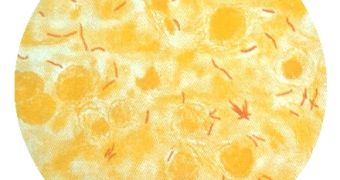Scientists from the National Institute of Allergy and Infectious Diseases (NIAID) – a part of the National Institutes of Health (NIH) – working with colleagues from the Novartis Institute for Tropical Diseases in Singapore, managed to devise a new experimental drug, that showed promise in lab tests, when it managed to make Mycobacterium Tuberculosis, the bacterium that triggers tuberculosis (TB), explode from within, after the medicine forced it to secrete nitric oxide (NO).
NO is a very flammable gas, and its appearance inside the cell is deadly to bacteria. The oxide acts just like a large bomb exploding in a paper-walled room – everything inside the pathogen is completely destroyed. After years of research, the scientific team managed to recreate the accurate process that goes on inside M. tuberculosis, in a test tube.
"It took several years, but at last we were able to recreate in the test tube what happens inside mycobacterial cells when the bacterial enzyme, which we named Ddn, and a second bacterial component called a cofactor, interact with PA-824," says Dr. Clifton E. Barry, III, PhD, the leader of the current study, who is a scientist working with the NIAID. "This highly reactive molecule is akin to a bomb blast that kills the bacteria from within."
PA-824 is the current name for the experimental drug, whose actions are more thoroughly described in the paper published in the November 28th issue of the journal Science. Barry says that the new substance acts much in the way that regular human immune cells do. Killer T cells in our blood stream trap pathogens within, and then naturally secrete NO to "blow up" the intruders.
Because neither the cofactor nor the Ddn exist in the human body, the drug will have no side effects on other cells except that of M. tuberculosis, the report states. If human clinical trials succeed on humans, then, most likely, we will see an implementation of this principle in therapies fighting other bacteria as well.

 14 DAY TRIAL //
14 DAY TRIAL //